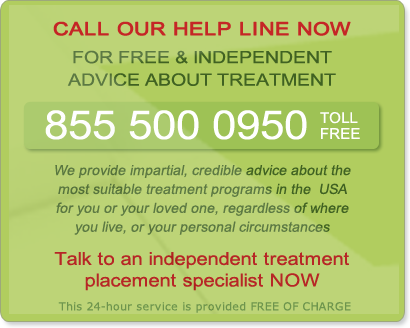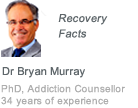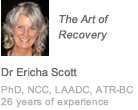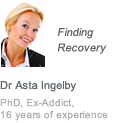Inhalant Addiction
Inhalant addiction is the regular breathing of chemical vapors. The inhalation of these vapors cause mind-altering effects. There are products all around the home and workplace: under the kitchen sink, in the garage, or in storage closets that can be inhaled. The vast majority of people are not even aware that these products can be abused, mainly, because the products were never meant for anything but their intended use. One national survey indicates that about 3.0% of American children have tried inhalants by the time they reach the fourth grade. Inhalant abuse can become chronic and extend into adulthood, presuming, of course that the user survives that long.
Most “inhalers” will use whatever is available to obtain their “fix”. However, just like any addict, they generally have a drug of choice. There are products which contain certain chemicals that are preferred by the inhalant addict. Each product allows for a different high and different users like some better than others.
Types of inhalants
Inhalants fall into 4 main categories:
- Aerosols
spray paints, hair sprays, and deodorant sprays - Volatile Solvents
paint thinners, paint removers, gasoline, and various glues. - Nitrates
Room deodorizers, leather cleaners, and those small brown bottles sold mostly in “sex shops” called “poppers” and sold under various other names. - Gasses
Including, whipped cream canisters, butane lighters, and propane tanks.
What are the patterns of inhalant addiction?
Generally speaking inhalant addiction begins at a young age. The child will not have access to alcohol, but can get to the can of hair spray in the bathroom, or the extra can of gasoline in the garage. The main problem is that because such major damage is being done to the child’s brain inhalant addiction is one of the most difficult abuse states to treat. Many inhalers wind up with various psychological and social problems, along with, of course, a good deal of cognitive impairment.
According to the Drug Abuse Warning Network (DAWN), the 2003 Drug Abuse Warning Network Interim Report estimates 627,923 drug-related emergency department visits for the 3rd and 4th quarters of 2003. Inhalants were attributed to 1,681 of these reported visits. This is not a large number, 1,681 out of 627,923. However two facts must be remembered:
Inhalant addiction is not one of the major addictions.
Most of the 1,681 were most likely children.
How do inhalants affect the body?
The chemicals are inhaled and are immediately absorbed into the lungs and so to the bloodstream. After the chemicals hit the bloodstream they of course travel to the brain and in time reach the rest of the body’s organ systems. The effects of inhalants are very similar to those that drinking alcohol produces.
- Euphoria
- Dizziness
- Impaired speech
- Compromised motor functions
- Lightheadedness
Inhalant intoxication lasts from a few seconds to a few minutes, so the abuser winds up inhaling consistently throughout the night, day, or during whatever time period it is that they prefer to use. Excessive inhaling can cause loss of consciousness and then death shortly thereafter.
People who use inhalants consistently over, say, a week, report that they develop a certain “need” for the drug. If they give in, they wind up with a whole assortment of additional side effects, including, but not limited to:
- Depression
- Irritability
- Inattention
- Disorientation
- A major lack of coordination
The health hazards of inhalant addiction
Even though inhalants all have different make-ups, they all produce an extremely short term high. This high is akin to being drunk, but only last a few minutes. In order to maintain a high, the addicts must re-inhale every few minutes of so. The more they inhale, the less in control they feel, and eventually they simply lose consciousness. In addition, sniffing certain chemicals such as the ones present in aerosols can cause immediate heart failure or stroke.
There are three main categories of “effect” that can be caused by inhaling certain chemicals. These categories, in order of their severity are:
Effects That Cause Immediate Death
- Suffocation
- Convulsions and seizures
- Choking
- Asphyxiation
- Sudden death via involvement accidents while high
Irreversible Effects
- Limb spasms
- Hearing loss
- Brain damage
- Bone marrow damage
Serious but Potentially Reversible Effects
- Blood oxygen depletion
- Liver and kidney damage
Why people use inhalants
Most inhalant addicts believe that because the sources of the inhalants can be bought legally, they must be less harmful than other “illegal” drugs. The truth is that while the chemicals may be superb when cleaning, they are often deadly when inhaled.
There is one type of inhalant that is particularly deadly, deadlier than any other. “Dusting” as it is called, is the inhalation of the compressed air in the cans that they sell for dusting off the keyboards on computers. Inhaling the substance inside is likely to do one of two things. Kill the user instantly, or leave them with frostbite on their lips, tongues, and down their throats. And there are not even warning labels on the cans.
How inhalant addiction kills
Just as illicit drugs kill, even with one use, so do inhalants. Here are the five main ways that inhalant abuse can kill:
- Injuries
Often, when an individual is high, and has been “huffing”(inhaling) all night, their brain functions are clearly compromised and they are incapable of making rational decisions. They may decide to drive while high, or while lighting a cigarette, and because they are not in control of their motor functions, may catch the toxic fumes of the inhalant on fire, thereby injuring them severely. - Asphyxia
Often, when someone is in the throes of inhalant addiction, they will fill a bag with fumes and put it over their heads in order to breathe in the fumes and no other irritating pollutants like air, thereby increasing their high. This displaces the oxygen in their lungs, not allowing them to breathe, which in turn causes nearly immediate death. - Choking
A user can choke on his or her vomit. - Suicide
Some people become depressed when their high wears off, and kill themselves. - Instant Death
A user takes one inhalation, their pulse rate shoots up, becomes erratic, and they die instantly from cardiac arrest.
Signs of inhalant addiction and abuse
Every addiction has a series of behaviors associated with it that essentially “give it away”. Inhalation addiction is no different. Below are some of the symptoms associated with inhalation addiction, however because some of these symptoms may be associated with other disorders as well as inhalant addiction, it is best to check with a professional before a definitive diagnosis can be made:
- Mood swings
- Extreme anger, agitation, and irritability
- Loss of appetite
- Exhaustion
- Facial blisters & rashes
- Hallucinations
- Frequent coughing
- Extremely bad breath
- A perpetual runny nose
- Frequent vomiting
- Dilated pupils
- Extremely bad breath
Seeking treatment for inhalant addiction
As with any treatment for drug addiction a holistic program is always the best choice. It is no different with inhalant addiction. The causes that have led the individual to the point of addiction are not simple. They are rooted in every cell and fiber of who that person is, or has become. The only way an addiction can be completely eradicated is through a comprehensive course of holistic treatment. Just as an eco-system relies on each part of itself to create, heal, reproduce, and basically self-sustain, so does the human body.
Fortunately for the sufferer of inhalant addiction, and any addiction for that matter, Holistic Treatment Centers are popping up all over the world, and some have even been established for close to 30 years.
Treat only the symptoms of addiction and it will return. Treat the addiction as part of the person, as they are, for who they are, all systems, all aspects, all underlying issues, and all pre-existing traumas, and you have a real shot at curing inhalant addiction, or any addiction.












